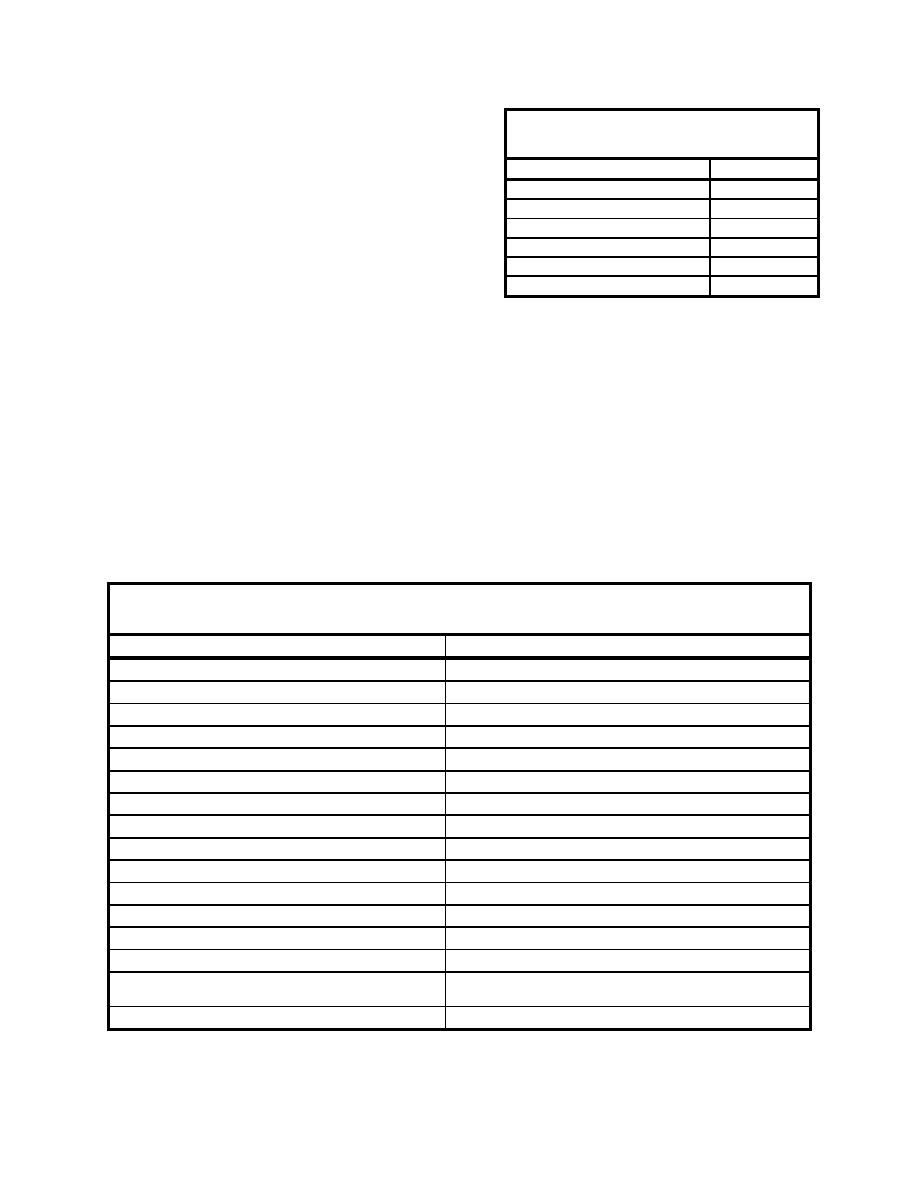 |
||
|
|
||
|
Page Title:
Table 5. Comparison of CCL with GCL (after Daniel and Wu (1993)) |
||
| |||||||||||||||
|
|
 ERDC TN-DOER-R6
December 2004
Geosynthetic clay liners. Geosynthetic clay liners
(GCLs) consist of a clay layer between two layers of a Table 4
synthetic material, with the intention of preventing Bentonite Properties
leachate from infiltrating the clay and passing through Property
Value
holes and tears in the synthetic liner. GCLs use a Liquid limit
500-600%
prefabricated multiple layer system to reduce the Plastic limit
30-60%
<10-9 cm/sec
permeability of the liner and to minimize the cost and the Hydraulic conductivity
thickness of the liner. Table 4 lists the properties of pH
9
bentonite clay, which is used as the center layer for many Moisture content (field)
24%
GCLs. Bentonite clay consists of platelets that are Moisture content (processed)
8%
ionically charged and thus attract polar molecules such as water (Gundle Lining Systems, Inc. 1993). The
polar water molecules wedge themselves between the molecules of the clay and cause swelling to occur.
This swelling effect reduces the permeability of the clay by nearly eliminating any flow paths between the
platelets. When the clay is combined with the geomembrane layers, the resulting liner efficiently blocks
the migration of an aqueous solution that contains contaminants. The layers of geomembranes between
which the clay is sandwiched prevent desiccation as described in the previous section on compacted clay
liners.
Daniel and Wu (1993) compared the qualities of GCLs to those of compacted clay liners (CCLs) (Table
5) for municipal landfills. Their comparison leads one to believe that GCLs are a more viable option than
CCLs, except for very short storage periods (e.g., less than five years) (Qian 1995). With the large areal
extent of CDFs, however, the GCL may prove to be a significantly more expensive option compared to a
CCL, which may be locally available and cost many times less to employ.
Table 5
Comparison of CCL with GCL (after Daniel and Wu (1993))
Compacted Clay Liner
Geosynthetic Clay Liner
Thick (0.6 ~ 1.5 m)
Thin (<10 mm)
Field constructed
Manufactured
Hard to build correctly
Easy to build (unroll and place)
Impossible to puncture
Possible to damage and puncture
Constructed with heavy equipment
Light construction equipment required
Often requires test pad at each site
Repeated field testing not needed
Site-specific data on soils needed
Manufactured product; data available
Large leachate-attenuation capacity
Small leachate-attenuation capacity
Large thickness; takes up space
Little space is wasted
Cost is highly variable
More predictable cost
Soil has low tensile strength
Higher tensile strength
Can desiccate and crack
Cannot crack until wetted
Difficult to repair
Not difficult to repair
Vulnerable to freeze-thaw damage
Less susceptible to freeze-thaw damage
Performance depends highly on quality of
Hydraulic properties are less sensitive to construction
construction
variabilities
Slow construction
Much faster construction
13
|
|
Privacy Statement - Press Release - Copyright Information. - Contact Us - Support Integrated Publishing |